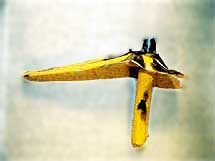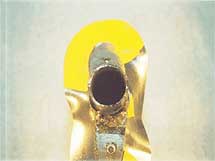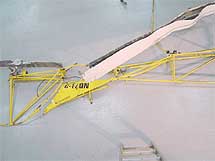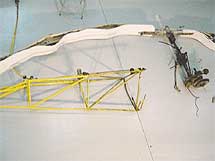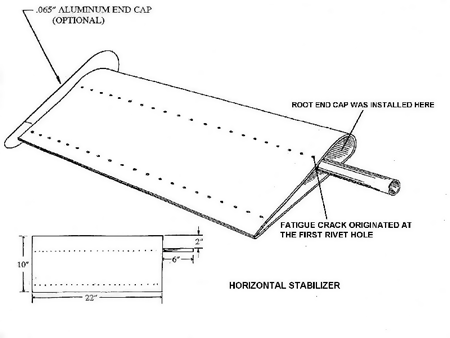In-flight Breakup / Collision With Terrain
Baby Belle (Helicopter-Amateur Built) C-FZQN
Ralph, Saskatchewan
The Transportation Safety Board of Canada (TSB) investigated this occurrence for the purpose of advancing transportation safety. It is not the function of the Board to assign fault or determine civil or criminal liability. This report is not created for use in the context of legal, disciplinary or other proceedings. See Ownership and use of content. Masculine pronouns and position titles may be used to signify all genders to comply with the Canadian Transportation Accident Investigation and Safety Board Act (S.C. 1989, c. 3).
Summary
On 20 March 2004, the Baby Belle amateur-built helicopter (registration C-FZQN, serial number BB2066) departed from a farm located near Ralph, Saskatchewan, on a local visual-flight-rules flight. The purpose of the flight was to inspect grid road and highway intersections for snow accumulation.
Shortly after take-off, debris began to fall from the helicopter while it was flying in a northwesterly direction at approximately 500 feet above ground level. The helicopter dropped vertically; the nose pitched down; and the helicopter, while in a steep, nose-down attitude, crashed on a farm field. The pilot, the sole occupant, was fatally injured. The helicopter was destroyed by a post-impact fire. The accident occurred at approximately 1000 central standard time.
Factual information
The pilot held a valid private pilot helicopter licence with Baby Belle and RH22 endorsements, daylight only, and was properly certified for the intended flight. The pilot, who also constructed and maintained the helicopter, had a total of 208 hours of flight time, of which 137 hours were on type. The helicopter was an amateur-built aircraft constructed from a kit. Construction was completed in 2003, and the helicopter had a total flight time of 169 hours.
The closest meteorological reporting office was at the Regina Airport, approximately 75 miles northwest of the accident site. At 1000 central standard time,Footnote 1 the weather recorded at the Regina airport was as follows: ceiling unlimited, visibility 15 statute miles, temperature −10°C, wind 350° at 11 knots gusting to 16 knots, and altimeter setting 30.60. The meteorological conditions were similar at the accident site, where they were reported as clear with strong, gusting northwesterly winds.
The helicopter struck the ground at a steep angle. Fuel samples and instrument readings were not available because of the post-impact fire. The main rotor blades had separated from the main mast yoke and were found at the main wreckage site. Indentation marks on the yoke were consistent with mast bumping, and the main rotor blades exhibited extensive downward bending. The spar of one rotor blade had failed in overload. Damage to the engine cooling fan, which is driven by the engine, was consistent with little or no engine power at the time of impact. The flight controls were inspected, and no pre-impact anomalies were found.
Several searches of the accident site and the surrounding area were conducted. Scattered pieces of the bubble canopy and 4130-tubular-steel tail boom structure were found one-half kilometre from the main wreckage. Station 214-241 of the tail boom structure, with the tail rotor gear box still attached to its mount, was found 40 metres from the main wreckage. The tail rotor, which had separated at the gear box shaft, was found approximately 100 metres from the main wreckage. Analysis of the fractured shaft revealed an overload failure. The horizontal stabilizer attachment structure (see Photo 1) had broken off the tail boom and was found adjacent to station 214-241 of the tail boom structure. The attachment structure had a piece of stabilizer spar still attached. This piece of horizontal stabilizer spar revealed a complete fracture at the first rivet hole of the root end. Despite several searches of the area under and surrounding the flight path, the horizontal stabilizer airfoil was not found. Analysis of the fracture revealed 75 per cent fatigue cracking around the circumference of the spar tube (see Photo 2). The remainder of the spar tube had failed in overload. Although the horizontal stabilizer airfoil was not found, the horizontal stabilizer was still attached to the helicopter at the conclusion of the previous flight.
The horizontal stabilizer is a 22-inch long symmetrical airfoil mounted with a 2-degree positive angle of incidence, opposite the tail rotor at station 241 (see Appendix A). The horizontal stabilizer is constructed of 4130-steel spar tubing and has holes drilled through it for attaching the airfoil with rivets. In forward cruise flight, the stabilizer aids in controlling the helicopter. At speeds below 70 mph, the stabilizer lifts the tail. At speeds above 70 mph, it forces the tail downward. At speeds above 70 mph, the slipstream acts upon the bubble canopy, pitching the nose down and the tail up. As the tail pitches up, the top surface of the horizontal airfoil engages with the slipstream, resulting in a downward force to achieve an equilibrium. The stabilizer also dampens vibrations caused by the tail rotor.
The horizontal stabilizer attachment structure found at the site was equipped with an aluminum end cap that was mounted against the airfoil at the root end (see Photos 1 and 2). A review of the construction drawings and a discussion with the kit manufacturer, revealed that the stabilizer is equipped with an end cap on the outboard end of the airfoil and is not designed with an end cap at the root end.
The helicopter had previously been subject to a tail-rotor blade separation and two tail-rotor strikes during hovering manoeuvres. A review of the maintenance records indicated that the tail rotor had been replaced 111 flight hours prior to the accident flight. No record of any tail-rotor strike was found. The Canadian Aviation Regulations require that the particulars of any abnormal occurrence involving an aircraft be recorded in the aircraft journey log.
The tail-rotor blade separation that occurred previous to the accident flight caused the horizontal stabilizer spar to bend. The spar was subsequently bent back and cold straightened using a press. This process for straightening a tubular horizontal stabilizer spar is not a recommended maintenance practice. No record of the spar repair was found in the aircraft maintenance records.
Analysis
During the accident flight, it is likely that the horizontal stabilizer separated while the helicopter was cruising at speeds in excess of 70 mph, causing the tail of the helicopter to pitch up, and the pilot to lose control. Forces produced by the sudden upward movement of the tail boom bent the main rotor blades down, resulting in tail structure interference with the main rotor disc (see Photos 3 and 4). Continued rotation and mast bumping of the main rotor blades destroyed the bubble canopy, and caused the in-flight break up of the helicopter. It is likely that during ground impact the forward protruding rotor blade was forced up, resulting in an overload failure of the rotor spar.
The separation of the horizontal stabilizer during the accident flight is probably related to the previous separation of the tail-rotor blade and its subsequent repair. The separation of the tail-rotor blade induced an excessive amount of vibration in the stabilizer that, when combined with the 22-inch arm of the airfoil, bent the stabilizer spar at the root end. The repair, in which the stabilizer spar was bent back and cold straightened, in combination with the excessive vibration, would concentrate forces at the first rivet hole of the root end. The subsequent two tail-rotor strikes then would have aggravated the localized stress concentrations. The vibrations induced by the tail-rotor blade separation and tail-rotor strikes initiated fatigue cracking. Continued operation of the helicopter resulted in continued fatigue cracking and in the eventual overload failure of the stabilizer spar. Installation of the aluminum end cap at the root of the horizontal stabilizer airfoil did not allow inspection of the area, effectively hiding the fatigue crack.
The following laboratory report was completed:
- LP 038/04 – Horizontal Stabilizer Spar Failure
Findings
Findings as to causes and contributing factors
- Separation of the tail-rotor blade during a previous flight had induced an excessive amount of vibration in the stabilizer, resulting in bending of the horizontal stabilizer spar.
- Cold straightening the stabilizer spar, which was not a recommended maintenance practice, concentrated stresses at the first rivet hole, resulting in fatigue cracking. Subsequent tail-rotor strikes aggravated localized stress concentrations.
- Separation of the horizontal stabilizer resulted in a loss of control and in a sudden upward pitch of the tail boom, resulting in the bending of the rotor blades, and causing interference of the tail-boom structure with the rotor disc.
Finding as to Risk
- Installation of the end cap at the root end of the stabilizer spar hid the fatigue crack.
Other Finding
- No record of the stabilizer spar repair was found in the maintenance records, contrary to the Canadian Aviation Regulations.
Safety action
The Transportation Safety Board completed and distributed an occurrence bulletin to the manufacturer and to recreational aircraft organizations advising of the stabilizer failure.
The manufacturer of the Baby Belle kit has issued a technical bulletin informing operators of the occurrence and of the recommended inspection criteria. The bulletin also advises operators to comply with the design by removing the end cap, if installed, at the root end.
This report concludes the Transportation Safety Board's investigation into this occurrence. Consequently, the Board authorized the release of this report on .
